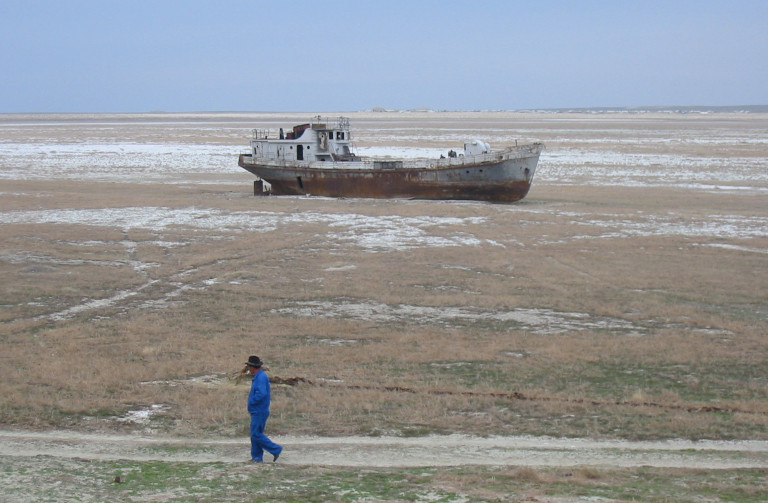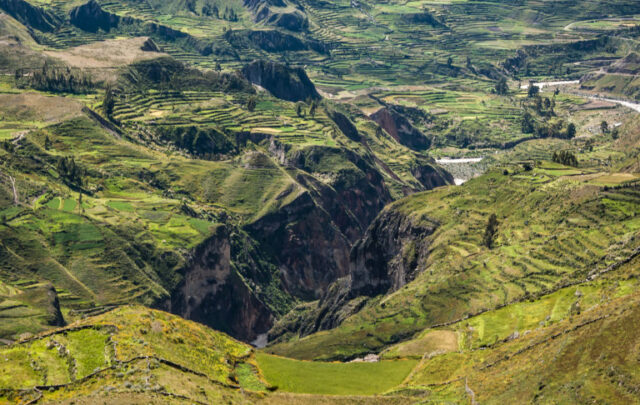“When you drink the water, remember the spring.”
— Ancient Chinese proverb
The thirst of humans and our technology for water, according to two important studies, is bottomless and accelerating, even if the precious liquid itself is finite on this planet.
One study shows that human activity has massively altered the world’s flow of surface water and imperilled water cycles critical for life as varied as fish and forests.
The other confirms that in many places on Earth aquifers and groundwater wells are being pumped and mined faster than they can be replenished.
The concept of the technosphere helps to explain the forces in play. U.S. geologist Peter Haff has described the technosphere as a parasitic offshoot of the living Earth, or biosphere. This largely autonomous force, committed to endless consumption, wields a “matrix of technology” that directs the flows of energy, materials, water and waste across the globe. It leaves in its wake enormous streams of pollution: plastic, carbon dioxide, nitrogen and the foulest of water.
Haff observes that
“humans have become entrained within the matrix of technology and are now borne along by a supervening dynamics from which they cannot simultaneously escape and survive.”
But the technosphere grinds on, damming, pumping, mining, harvesting and supporting all manner of artificial environments supposedly on behalf of the world’s eight billion people, who remain largely blind to the vast amounts of water needed to sustain it all. The technosphere respects no limits and unlike previous civilizations holds nothing sacred — not even a mountain watershed.
Before the technosphere began its conquest of the biosphere, surface water and groundwater worked together in one of the world’s most remarkable and faithful marriages.
One is visible in the form of gurgling streams, undulating rivers and lively marshes. The other is invisible yet connected to them all. Surface waters replenish subterranean waters and vice versa. When a civilization abuses one, it trashes the other. Drain the Ogallala Aquifer, for instance, and parts of the Arkansas River simply dry up.
And that’s what these two recent studies clearly document.
Upsetting the freshwater cycle
All life depends on the flow of water. The first study by Finnish researchers used some sophisticated modelling to show changes over time. They found that over a 145-year industrial period, the technosphere and its growing population have dramatically shifted streamflow and soil moisture compared with a pre-industrial baseline (1661-1860). In other words, human pressure on natural water flows turned a fairly stable system into a fragile one.
It has done so with dams (only one-third of the world’s rivers remain free flowing), deforestation, irrigation, city-making and “intensification and homogenization of global water cycle.” As a result, the world is experiencing increases in the severity, frequency and duration of floods and droughts.
Changes in streamflow and soil moisture started to steadily increase after the end of the pre-industrial period and surpassed the upper bounds of pre-industrial variability by the early 20th century.
The Mississippi, Indus and Nile basins, for instance, were among the first regions to show “persistent transgressions” in streamflow variability due to human engineering. Changes in soil moisture occurred in fewer regions and often later than in the case of streamflow, and were most notable in Siberia, South and Southeast Asia and the Congo Basin.
The intensity of irrigation corresponded “with increasing dry streamflow and wet soil moisture deviation frequency” in places such as South Asia, eastern China, the western United States and the Nile Delta. The Aral Sea in Central Asia, formerly the world’s third-largest lake, tells a familiar water parable: the overuse of water for irrigation to grow cotton depleted a great lake, devastated local fisheries, pummelled biodiversity and bred dust storms.
Dramatic shifts in streamflow and soil moisture (the amount of water available for plants) have also resulted in agricultural productivity shocks in South and East Asia, Australia and North Africa.
In sum, the land area experiencing streamflow and soil moisture changes from pre-industrial times has increased by 78 to 94 per cent and 42 to 61 per cent, respectively, over the last 145 years.
The Finnish researchers concluded with an obvious warning.
“Committing to ambitious climate action, halting deforestation and respecting environmental flows in water use and management is thus imperative to safeguard the life-supporting functions of freshwater.”
A logical question follows: Will the technosphere, a leviathan humans have created but don’t consciously guide, allow such a shrinkage of its insatiable ambitions?
The empty wells
Groundwater fills subterranean cracks and gaps in rocks and sediments with fresh water. It accounts for around 30 per cent of all readily available fresh water in the world. About 10 million Canadians depend on it for their drinking water.
A group of researchers from the University of California, Santa Barbara, spent three years collecting and analyzing data on some 1,700 aquifers around the world. That’s how long it took “to make sense of 300 million water level measurements from 1.5 million wells over the past 100 years.”
The researchers found that groundwater is dropping in 71 per cent of the studied aquifers. (Much of the world has little data on groundwater depletion.)
The rate of decline is accelerating the fastest in many arid regions including Southern California, the Great Plains, Saudi Arabia, northern China, Iran and Chile. (Separate studies show that about 45 per cent of 80,000 groundwater wells in the United States show persistent declines since 1940.)
Groundwater levels have dropped by one metre in central Alberta and Saskatchewan too.
The acceleration in groundwater depletion has sped up in the last 20 years compared with rates recorded in the 1980s and 1990s. The worst declines are all taking place in semi-arid geographies transformed by irrigation.
The climate crisis has played a significant role. Depletions in about 90 per cent of aquifers occurred in geographies that have gotten drier over the last 40 years. Global heating causes more surface water to evaporate before it has a chance to seep into the ground and replenish aquifers. Climate change, as recent Tyee articles have noted, also shrinks snowpacks.
Perhaps prompted to provide a word of optimism, the researchers duly emphasized that aquifers have been recharged in a few instances. But in most cases the water didn’t come from conservation but from another water basin. Peter was robbed to pay Paul.
The implications of groundwater extraction are straightforward. Places like Kansas that depend on groundwater for industrial farming will record their smallest wheat production this year since the 1960s. Wherever aquifers have been drained, sinkholes appear, the land subsides and streams and rivers dry up.
What the two studies are telling us is this: water usage by the technosphere has damaged the global water cycle and is now outstripping groundwater capacity. Water and food security are at risk.
One of the key drivers of this water crisis, although not explicitly mentioned in the papers, has been the Jevons paradox. Whenever technologies make the consumption of a resource more efficient, little or no savings are realized because of increased consumption.
Efficient irrigation systems have not conserved water but encouraged the expansion of irrigated land and related technologies, resulting in increased water spending around the world. In northern China, for example, highly efficient water systems have resulted in not a decrease but an increase in water consumption.
With global temperatures poised to rise beyond 1.5 C above pre-industrial levels, the movement of water around the planet will become ever more variable and unreliable.
The more technology cannibalizes the biosphere and tries to manage or commandeer its water flows for the benefit of one species, the more extreme, unpredictable and variable water flows will become.
Our ancestors, who possessed imaginations and lived in a biosphere, had names for monsters: Minotaur, Leviathan, Moloch, Jorogumo, Hydra and Lamashtu.
What name would befit the ever-thirsty technosphere, the mechanical dragon changing the journey of the world’s fresh waters? ![]()





